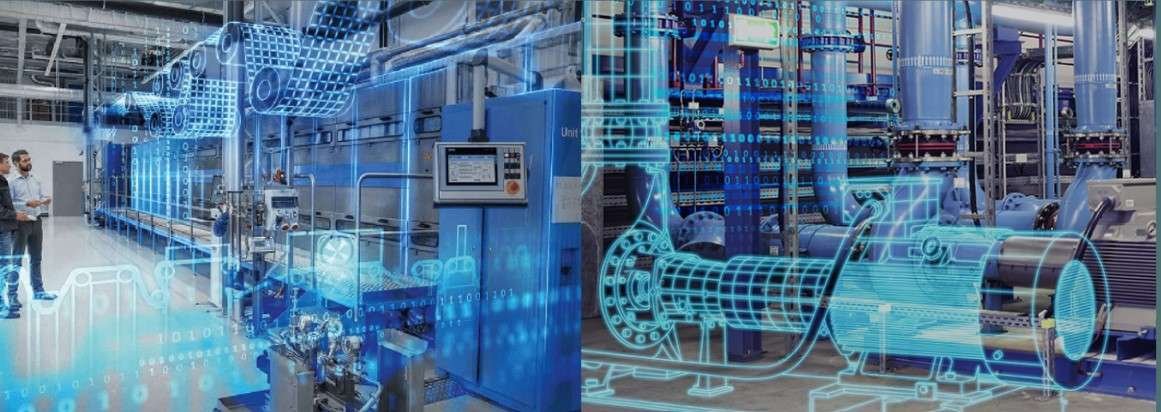Introduction: Digital Twin in Manufacturing
The world is evolving at a dizzying speed, and manufacturing is not left out of this evolution. The advent of digital twin in manufacturing has brought about groundbreaking changes in the way manufacturing processes are managed, resulting in efficiency and growth. Factories are now leveraging the power of digital twinning to replicate their physical operations in a virtual environment, which allows them to have detailed overviews and make informed business decisions. This blog post will dismantle the intricacies of digital twin technology and explore its incredible benefits for modern factories.
Defining Digital Twin in Manufacturing:
What is a digital twin? A digital twin is a digital replica of a physical object, system or process. In the manufacturing sector, it manifests as a virtual model of a product, system or process that duplicates its physical equivalent in real-time. This innovative technology allows manufacturers to visualize factory operations, simulate production scenarios, optimize processes, and quickly adapt to changing demands.
The Critical Impact of Digital Twin on Manufacturing Processes:

Digital twin technology is revolutionizing manufacturing processes in ways we’ve never before thought possible. Its ability to simulate, predict, and optimize processes in real-time is a game changer. Some benefits it offers include:
Enhanced Predictive Maintenance: Digital copies of machines help factories spot issues before they happen. This means they can carry out repairs in a timely manner.
Improved Product Quality: Having a digital twin gives those in manufacturing a complete look at how they make things. This means they can quickly fix problems with quality and avoid doing jobs twice.
Increased Operational Efficiency: With digital twin tech, businesses can see where things slow down, aren’t running well, or are wasting resources. This way, they can make work schedules more efficient and boost how much they produce.
How To Implement Digital Twin in your Factory:
Successfully incorporating a digital twin in your factory requires a well-defined strategy. Here are a few steps you can follow:
Assess Your Manufacturing Processes: Start your Digital Twin journey by examining your present manufacturing procedures. Pinpoint areas where a virtual representation can bring marked improvements. These could be design enhancement, predictive upkeep, or team based methods.
Set Defined Goals: Decide your aims for adopting digital twin technology. Do you wish to lessen idle time, boost output, or raise product standards?
Pick the Right Place: There are many options for digital twin tech out there. Find the one that aligns with your goals. To create a digital twin, you need the correct tech setup. Go for IoT sensors for instant data, strong analysis tools for key findings, and a sturdy digital system for smooth support of the simulations.
Collaborate with Experts: Digital Twins may be industry stars, but even a star needs support. Team up with experts who can help you with the setup process. The wisdom they offer can help shape a customized strategy for your plant.
Develop a Comprehensive Strategy: A full plan is important for success. Be clear about what you want to do with Digital Twins. Maybe it’s making design tasks simpler, improving how things work, or getting all parts of the supply chain to work well together.
Integration: You must link the digital twin tech with what you already have for smooth work. Digital Twins must slot into what you’re already doing. The aim is to make work better, not mess up tasks. Make sure changes go well and workers learn what they need to for this new digital world.
Embrace Continuous Improvement: Putting Digital Twins to work isn’t a single event. It’s a path of constant enhancement. Always check how it’s doing, ask people for their thoughts, and be ready to adjust to make it work better.
Use Cases of Digital Twin Technology in Manufacturing:
Several sectors have adopted digital twin technology due to the immense benefits it offers. We will look at some practical examples:
In the automotive industry, digital twins are used to simulate and optimize different aspects of vehicle design and production processes. For more detail information on this you can refer to our article on Digital Twins in the Automotive Industry
In electronics manufacturing, digital twins are often used to help manage and optimize complex assembly processes.
Future Implications of Digital Twin in Smart Manufacturing:
As the manufacturing sector continues to adapt to the changing market landscape, the role of digital twin technology cannot be underestimated. It’s not just another trend; it’s a revolutionizing tool essential for manufacturing in the future driven by digital transformation.
Conclusion:
Digital twin technology in manufacturing is more than just a buzzword; it’s a powerful tool that offers unprecedented opportunities for innovation, efficiency, and growth. As your factory embraces the digital transition, leveraging the power of digital twin technology can set you on the path to success.
Stay ahead of the curve and prepare for the future now by embracing digital twin technology. You’ll not only improve your current operations but set a strong foundation for the future in this era of digital transformation.




